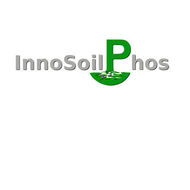Phosphorus cycling and spring barley crop response to varying redox potential (2020.0)
Baumann K., Nastah S., Shaheen S., Rinklebe J., Leinweber P.
Vadose Zone Journal, 19 (1),
Abstract
For arable soils, it is not clear whether closing a controlled drainage system leads to P mobilization due to water table rise and associated changes in redox-induced biogeochemical processes. Therefore, we investigated P mobilization at different redox conditions using three spring barley (Hordeum vulgare L.) cropped lysimeters filled with monoliths of arable northeastern German soil profiles. Pore water samples were collected weekly from three different depths, and dissolved (<0.45 μm) element concentrations of total C, P, Al, Fe, Mn, Ca, Mg, and K, as well as inorganic and organic C (DIC and DOC) and P (Pi and Po), SO42−–S, and NO2−–N and NO3−–N were determined. The total P concentration in pore water collected from a given lysimeter at a given time was 1.8 mg P L−1 maximum. Organic P concentrations in subsoil solutions were positively correlated with Fe concentrations. Grain yield of spring barley ranged between 5.6 and 6.5 Mg ha−1, and total biomass P uptake was negatively correlated with the stable P stocks of the soil profiles. Results suggest that reductive conditions in subsoils led to dissolution of pedogenic Fe-(oxy)hydroxides and release of Po compounds, the latter of which were more important for biomass P uptake than P released from stable P compounds. Overall, closing the drainage at the field site could represent a moderate P mobilization risk, which would probably be lower compared with a P mobilization risk caused by a heavy rainfall event.
